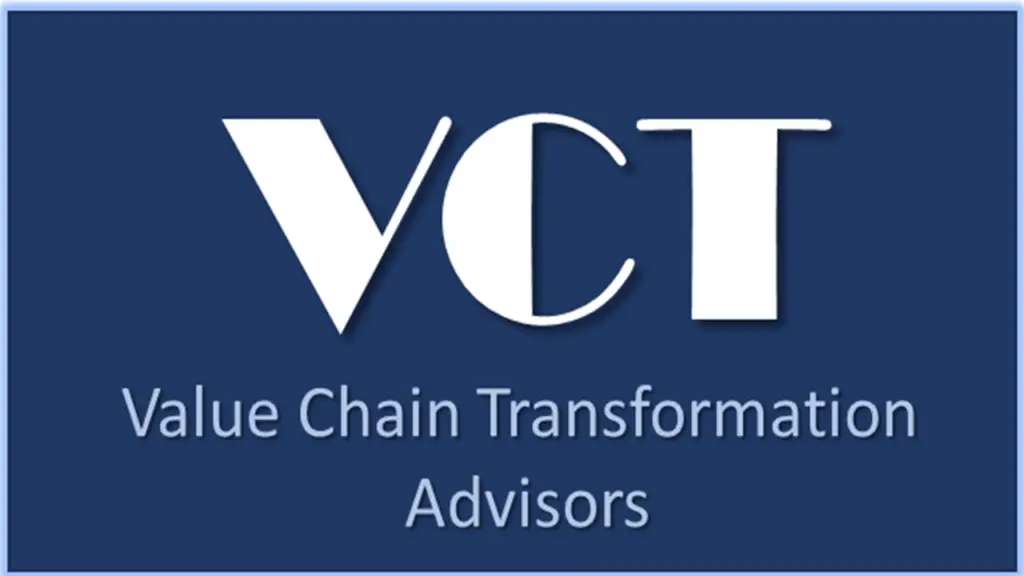Supply chains have become more challenging to manage in recent years. With market volatility on the rise, businesses need to be more agile and flexible. At the same time, there’s growing pressure to make supply chains more sustainable as the world pays more attention to environmental impacts.
Many companies are turning to artificial intelligence (AI) technology in supply chain management to streamline operations, speed up decision-making, and reduce costs. McKinsey found that AI in supply chain management can lower logistics expenses by 15%.
But where can you implement AI in the supply chain, and how can it be done? What challenges should you expect when setting up the technology, and how do you overcome them?
Understanding AI in Supply Chain Management
Businesses are turning to artificial intelligence to manage supply chain activities more effectively. Here are some benefits of AI in supply chains:
- Increased efficiency: AI can map out the best warehouse routes for picking up goods faster. It can also determine the most efficient and cost-effective way to transport products by analyzing the fuel and time needed to move from point A to point B.
- Reduced costs: AI in supply chain management automates repetitive tasks like inventory tracking. It completes them faster and more accurately than a human, cutting down on inefficiencies and increasing cost savings.
- Increased accuracy: AI is excellent at spotting patterns. You can use this capability to identify flaws, such as product defects and employee errors, long before they become a big issue.
- Improved decision-making: AI forecasting and real-time tracking give business leaders the insights they need to make better decisions quickly and plan for the future. Additionally, some AI tools can answer questions and act as advisors for decision-makers. Others can reason or assess multiple variables before making real-time decisions autonomously.
- Enhanced supply chain sustainability: AI-driven demand predictions help maintain optimal inventory levels, reducing excess storage costs and minimizing waste. When AI optimizes delivery routes, it increases fuel efficiency, which can lower carbon emissions and further promote sustainability.
The Shift Towards Agentic AI in Supply Chain Optimization
For decades, supply chain professionals have been using traditional AI agents in logistics, procurement, and demand planning. But now, a new technology is emerging — Agentic AI.
AI agents follow set rules and rely on human oversight to complete supply chain tasks. Agentic AI, on the other hand, can make decisions on its own, adapt in real time, and get more intelligent as it learns from changing conditions. These capabilities enable organizations to use artificial intelligence in complex, interconnected supply chains.
Instead of following predefined rules or protocols, an Agentic AI system coordinates multiple AI agents at once, adjusting its actions in real time to get the best results. Amber Salley, a supply chain technology executive and VP of industry solutions at GAINS, gives an example of how Agentic AI works:
“An Agentic AI system designed to minimize equipment downtime could integrate multiple agents, each responsible for a specific task. A predictive maintenance agent continuously monitors sensor data to detect early signs of failure. If an issue is identified, an inventory agent checks for available spare parts and recommends optimal stock levels. Simultaneously, a procurement agent determines whether additional parts need to be ordered, while a logistics agent coordinates their delivery. Finally, a maintenance scheduling agent ensures that technicians are available at the right time to prevent costly disruptions.”
When all these AI agents work together and make real-time decisions autonomously, your supply chain becomes resilient because you respond to change quickly.
Generative AI in Supply Chain: Practical Applications and Limitations
Generative artificial intelligence (GenAI), such as ChatGPT, streamlines supply chain operations by improving speed and minimizing manual tasks. Examples of GenAI applications in warehousing and logistics include:
- Automating route planning to reduce costs and lead time
- Providing shipment updates and delivery times through a chatbot interface
- Generating and verifying logistics documents
- Optimizing warehouse layout to streamline order-picking
- Automating stock replenishment to optimize inventory levels and prevent shortages
- Analyzing supply chain data and creating automated reports
While generative AI has numerous use cases, it falls short when it comes to supply chain forecasting. Sure, the technology can analyze historical data and use pattern recognition to predict what might happen in the future. The problem? Supply chain data often lacks consistent patterns.
Unpredictable events, such as natural disasters, pandemics, and cyberattacks, occur without warning. The randomness of potential disruptions and GenAI’s reliance on historical data alone make it difficult for generative models to make accurate forecasts. Research shows that generative AI performs the same or often worse than traditional forecasting tools. Yet, it requires more computing power.
Key AI Applications in Supply Chain Optimization
What are the primary use cases of AI in supply chain management?
Predictive Demand Forecasting
AI demand forecasting involves using AI to analyze and identify patterns in supply chain data. The insights inform demand forecasting.
Rather than just crunching old sales data, AI-powered predictive analytics models pull in information (via integrations) about current factors that may affect demand, such as market trends, weather patterns, and upcoming events. With these live updates, you get more accurate demand forecasts than traditional methods that rely only on past supply chain data.
Inventory Optimization
Some companies still rely on spreadsheets to track inventory. This manual approach is slow, prone to mistakes, and just can’t keep up with today’s complex supply chains.
AI inventory management automates the process. Instead of tracking inventory manually, smart algorithms determine the ideal stock levels for each product by considering multiple factors, including demand patterns, lead times, and service level goals. This real-time visibility ensures you hold just the right amount of stock and prevents excess inventory.
Supplier and Risk Management
AI can help you make informed decisions when choosing new suppliers. AI sifts through supplier data, including supplier performance data, current bids, pricing, financial stability, compliance records, and even political instability in their region, to provide you with data-backed insights.
Automated Logistics and Route Planning
Applying machine learning and artificial intelligence to supply chain management can help you map out the fastest, most fuel-efficient delivery routes. This reduces transportation costs, helps you get raw materials quickly, and enables you to deliver customer orders on time.
Plus, optimized fuel use means less carbon emissions. Your supply chain becomes more sustainable as a result.
Smart Warehousing
Warehousing technologies like radio frequency identification (RFID) tags generate real-time data on inventory levels. AI inventory management software can analyze this data and extract insights to optimize picking routes in the warehouse. This can speed up order processing.
Big companies like Amazon use AI-powered robotics in their fulfillment centers. With this advanced technology, intelligent systems automatically navigate warehouse aisles, locate specific items from shelves, and pick them up for packing.
The results? Faster inventory retrieval, quicker order processing, and more free time for warehouse staff to focus on crucial supply chain processes.
AI-Driven Decision-Making: From Tactical to Strategic Planning
In tactical and strategic short- and long-term planning, AI can aid decision-making in one of the following ways:
- Decision support: A human professional makes decisions based on expert knowledge and data insights extracted by AI.
- Decision augmentation: An AI system recommends a decision, like replenishment alerts, to a human actor.
- Decision automation: An AI-powered supply chain system makes decisions autonomously, such as deciding the best delivery route. Automated decisions are fast, scalable, and consistent.
Overcoming Challenges in AI Implementation for Supply Chains
Here are the most common challenges of setting up AI in your business and the best possible solutions:
Insufficient Data for Customizing AI Models
Finding enough high-quality data can be challenging when building a tailored AI tool from scratch or fine-tuning a pre-trained model. One solution is forming data-sharing partnerships with non-competing companies and research institutions.
Inaccurate Data
The reliability of AI models depends on the accuracy of the data they are trained on or learn from. Human reviewers should double-check that the AI training data is accurate, fair, and unbiased.
Security and Privacy Concerns
When companies collect customer data for AI models, there’s always the risk of exposure to cybercriminals or unauthorized personnel. To mitigate this threat, consider data anonymization and encryption before feeding information into supply chain AI models.
Inadequate AI Expertise
According to McKinsey, nearly half of business leaders say their companies develop and launch AI tools too slowly because of talent skill gaps. You can overcome this challenge by:
- Offering specialized AI training programs to upskill existing employees
- Collaborating with third-party AI experts for deployment and maintenance
- Using low- or no-code AI platforms, allowing supply chain professionals with limited technical backgrounds to work with AI
GAINS Systems: Transforming Supply Chain Performance With Smart, Adaptive Solutions
Some of the biggest challenges in the supply chain industry are siloed decision-making and clunky, outdated software tools. GAINS Systems provides a centralized supply chain performance optimization platform. The platform offers AI and ML automation for:
- Supply chain design and planning
- Forecasting
- Inventory replenishment
- Sales and operations planning (S&OP)
Don’t wait to make better supply chain decisions and keep up with today’s market uncertainty. Request a demo today and see how our platform improves supply chain decision-making speed, performance, and results.
Frequently Asked Questions
Below are answers to some of the most common questions surrounding AI-powered supply chain management tools.
How is AI Used in Supply Chain?
You can use AI to optimize logistics, streamline warehouse operations, forecast demand, and optimize inventory management.
What is the Future of Supply Chain With AI?
AI will increasingly drive decision-making and boost operational efficiency in supply chains.
How is Generative AI Used in the Supply Chain?
GenAI has multiple applications in supply chain management, including route planning, analyzing logistics documents, and automating inventory replenishment.
What are the challenges of AI in Supply Chain?
Problems with AI in supply chain include data inaccessibility, skill gaps, privacy concerns, and inaccurate data.



